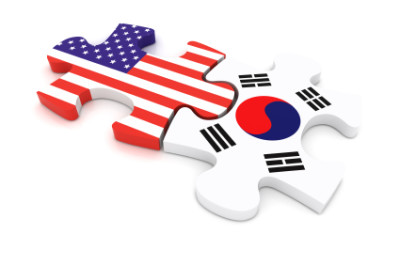By: Bruce H. Leeds, Senior Counsel
The Korea-United States Free Trade Agreement (KORUS) allows articles to be imported into the U.S. free of duty and Merchandise Processing Fees. It also allows articles exported from the U.S. to enter Korea free of duty. So, if you are importing from Korea, or exporting to that country, you simply declare the shipment as qualifying under KORUS, and reap the benefits, right?
Wrong! To qualify for benefits under KORUS the imported or exported articles must qualify under the applicable rules of origin, and the exporter or importer must be prepared to prove that the shipment qualifies by means of a certification signed by the producer of the article, or other acceptable evidence.
Like other free trade agreements KORUS has rules on what qualifies for benefits under the agreement. The rules to qualify look very much like the North America Free Trade Agreement and similar free trade agreements. In short, to qualify under KORUS the articles must be:
- Wholly obtained or produced in Korea or the U.S. “Obtained” in this context doesn’t mean purchased in a qualifying country. It means obtained from the natural resources of the country. For KORUS purposes articles wholly obtained or produced would be agricultural products or minerals, or articles 100% made from materials grown or mined in the qualifying country. An article manufactured from various parts and materials of different, or unknown origin, is not likely to meet the “wholly obtained or produced” definition.
- Meet the applicable rule of origin. The rule of origin applicable to an article is dictated by its classification in the Harmonized Tariff Schedule (HTS). The rule of origin could be based on “tariff shift” – non-originating parts and materials undergoing operations that result in a required change in HTS classification. It could also be based on Regional Value Content (RVC) – a qualifying content of 50% or 60% depending on the method of valuation used. In some instances an article must meet both the tariff shift and RVC rules.
It is not enough for an exporter or importer to simply declare that an article meets the applicable rule of origin, as they must be prepared to prove it.
On March 12, 2012 US Customs & Border Protection issued implementation instructions for KORUS. Although intended for its field offices and ports of entry, the instructions were made available to the public and serve as an excellent guide to qualifying under KORUS.
The instruction summarizes the rules of origin for KORUS. It goes on to describe the documentation required to qualify for tariff benefits under KORUS. It states that “the importer may make a claim for preferential tariff treatment based on a written or electronic certification issued by the exporter or producer, or based on the importer’s knowledge, including a reasonable reliance on information in his possession.” This means that the importer’s claim for KORUS benefits could be based on a certification from the exporter or producer, the importer’s own knowledge of the facts, or information in the importer’s possession. The latter could include bills of material and manufacturer’s affidavits, or the importer’s own survey of actual production of the articles at the producer’s factory. In actual practice, anything less than a certification from the actual producer supported by manufacturing records is probably insufficient.
For exports from the U.S., Korea has published a Certificate of Origin to be completed by the U.S. exporter or (preferably) the producer.
Under KORUS, CBP has the right to verify claims under KORUS. CBP may issue a Form 28 Request for Information asking for full documentation to support a KORUS claim. This may include flow charts, bills of material, certificates of origin, etc. to prove that the articles truly qualify. Korean Customs may request similar information for U.S. exports and has Customs officers at its consulates in the U.S. whose job it is to verify KORUS claims.
In the event of a Focused Assessment audit by CBP, Regulatory Auditors will determine whether the importer has made KORUS claims and, if so, will add KORUS verification to the list of things to be audited.
The intent here is not to discourage importers from making KORUS claims; but instead to caution that such claims must be done carefully, and must be supported by appropriate documentation.
Exporters to Korea may have demands from Korean customers for certificates of origin. They need to ensure that any such certifications are executed by persons with actual knowledge of whether the exported articles truly qualify under KORUS.
We can close with some recommendations for companies contemplating using KORUS:
- If importing from Korea, include language in purchase orders placed with Korean suppliers requiring them to provide a certification that the articles to be imported into the U.S. qualify under KORUS, and also require the supplier to provide additional information on request to support the certification.
- Do not allow a customs broker to make automatic claims for KORUS benefits. The claims should only be made on instruction from the importer and supported by appropriate documentation supporting the claim.
- Audit import entries after the fact to ensure that claims were only made when instructed by the importer. Importers should review ITRAC data or ACE reports to look for unauthorized claims.
- For exports to Korea, it is recommended that you have the process under the control of compliance personnel. Do not allow KORUS Certificates of Origin to be executed by employees or agents who do not have knowledge of the facts.
- Keep all associated records for five years so they will be available to U.S. or Korean Customs on request.
KORUS may be a real cost saver, but only if it is done right. Do it right!



























